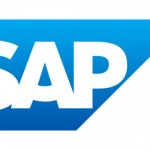IAB、Viewability impression の計測方法に関する「SafeFrame 1.0」を発表(英文)
The Interactive Advertising Bureau (IAB) today unveiled SafeFrame 1.0, a specification that offers mechanisms to support the measurement of digital ad impression viewability. This is a foundational element of Making Measurement Make Sense (3MS), an industry-wide initiative of the ANA, 4A’s and IAB, currently managed by the Media Rating Council (MRC), to standardize digital media metrics and define advertising “currency” that will strengthen the evaluation of digital media and promote cross-platform comparison for brand marketing. SafeFrame replaces traditional iFrames, adding key advantages, including the prevention of external access to sensitive publisher and consumer data while enabling advanced rich media capabilities.
“Buyers are clamoring for viewable impressions which are difficult for most to measure accurately when ads are served in frames. SafeFrame 1.0 is a vital next step in moving the industry ahead on that front,” said Steve Sullivan, Vice President, Ad Technology, IAB. “We look forward to rapid and robust adoption of SafeFrame, so we can continue on the 3MS path toward viewable ad impressions for online advertising transactions.”
“The release of SafeFrame 1.0 will allow us to actually see if an ad is viewable, in most cases. It will significantly contribute to the momentum of 3MS, propelling our current aggressive testing of viewable impressions, to keep us on the program’s original timeline,” said Sherrill Mane, Senior Vice President, Research, Analytics and Measurement, IAB. “This technical specification helps to resolve a major impediment in our ability to drive the interactive advertising industry towards a digital measurement paradigm that addresses needs of marketers, agencies and publishers in a cross-platform world.”
Beyond viewability measurement, SafeFrame 1.0 offers other key benefits, including:
・Standardized Advertiser Layouts – Advertising technology providers may standardize their ad code so that it can run on any publisher network that adheres to the SafeFrame API, reducing operational costs
・Secure Data Collection – Without compromising page/user security, SafeFrame enables controlled rich media interactions and data collection, while eliminating the need for publisher-side files
・Programmatic Trading of Rich Media – For the first time, ad networks and exchanges employing SafeFrame will be able to programmatically trade expanding rich media ad units, opening up new revenue streams for publishers while extending brand reach for advertisers
In conjunction with releasing the SafeFrame 1.0 specification, IAB is releasing an open source reference implementation (actual working reference code) of the spec that will help companies adopt the new technology, reducing time to market and associated development costs. To further support SafeFrame, IAB has published an in-depth online SafeFrame FAQ addressing many of the questions raised during the specification’s public comment period. Available on the IAB website at www.iab.net/safeframeFAQ the FAQ addresses a range of concerns, such as:
・Is a SafeFrame the same thing as an iFrame? What are the differences?
・Does SafeFrame affect page load performance?
・How does SafeFrame benefit the buy-side?
・Does SafeFrame limit the ability to collect data?
・Does SafeFrame support the “AdChoices” program developed by the Digital Advertising Alliance (DAA)?
・Can a third party, such as a verification vendor, host the SafeFrame API?
・Does SafeFrame support contextual display advertising?
・Does SafeFrame work on mobile devices?
・To download a complete copy of the SafeFrame 1.0 specification, go to www.iab.net/safeframe, and to gain access to the SafeFrame reference implementation, please visit www.sourceforge.net/p/safeframes.
About the IAB
The Interactive Advertising Bureau (IAB) is comprised of more than 500 leading media and technology companies that are responsible for selling 86% of online advertising in the United States. On behalf of its members, the IAB is dedicated to the growth of the interactive advertising marketplace, of interactive’s share of total marketing spend, and of its members’ share of total marketing spend. The IAB educates marketers, agencies, media companies and the wider business community about the value of interactive advertising. Working with its member companies, the IAB evaluates and recommends standards and practices and fields critical research on interactive advertising. Founded in 1996, the IAB is headquartered in New York City with a Public Policy office in Washington, D.C. For more information, please visit










